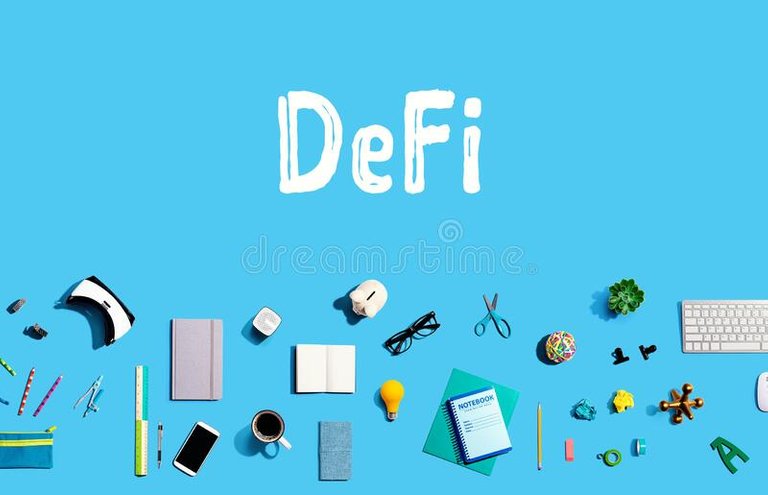What it is and why should you care?

Decentralized finance is the term used to describe the idea of using multiple distributed systems with no one owner to manage financial resources. In the most common application, this includes using a distributed database, a blockchain to track and manage assets. While this is often the most effective way to track and manage a business's finances, it's also one of the most difficult to set up and maintain, and it's also very limited in terms of what data can be accessed. At the same time, the information is available for everyone to see, creating transparency that is said to one day resolve the issues of current financial institutions.
Enter DeFi

DeFi is a shortened term for decentralized finance, an umbrella term for various software programs in either decentralized or blockchains oriented towards disrupting traditional financial intermediaries. DeFi borrows inspiration from blockchains, the technology behind the virtual currency bitcoin, which allows several entities to share a copy of an entire history of transactions on a public ledger. In simple terms, this means that a number of entities all have access to the same financial information, without the need for a single centralized database to run across many different systems. The concept, however, goes beyond this simple description. There are actually several open-source software tools, such as consensys, that are based upon these technologies and have been developed specifically for the purpose of managing decentralized finance in a more efficient manner.
In order to understand why DeFi platforms are so popular among businesses looking to automate financial management, it's important to understand how they work. In most cases, the goal of any business that utilizes a DeFi platform is to reduce the number of people who need to access financial information, and thereby reduce the need for the services of the financial intermediaries that provide it. In a traditional system, this can be accomplished in a couple of different ways. One of the more conventional methods is to create an application called an applet, which runs in the background on the user's computer, displaying data about the company's account on a central company's website. While this allows the users of the applet to access various financial information directly, it's inefficient at a glance because it only displays the details of one single company at a time. In order to display the full financial information required for each business, a single system would have to be built, allowing multiple users to access the same information. This is usually a very costly and time-consuming project.
Another option is to use a cloud service such as Blockstack to manage the financial data of multiple users through a centrally maintained database. It's designed to be as customizable as possible, allowing the users to select from several templates or customize the appearance and functionality of the application to their liking. This provides more efficient and effective information sharing and allows multiple users to access the same financial data simultaneously, saving a great deal of time and money in the long run. As more companies are looking to go beyond traditional banking to offer their clients more services, including financial services that utilize the new technology provided by blockchains, a third option has emerged as a viable alternative to traditional systems. With the advent of the development of blockchains, the need for a central database has become a thing of the past, since it's impossible for centralized servers to store the full information needed to run a business. However, there is still a need to store historical data to back up the company's database, and this information is maintained in a decentralized fashion, meaning that it can be accessed from any browser with access to the internet, even if the server has been shutdown.
DeFi: A win-win for all

By allowing the users to access financial data remotely, blockchains allow users to view and create new accounts, transfer money, and perform other business functions without the need for intermediaries. While the ability to share information between users remains limited, these services allow users to access information across different industries, regardless of whether the users work in different countries or not. Because the software itself is very small, it's easy to make this type of application available as a downloadable service, which means that businesses can make this information available to users without having to invest in servers.
With the amount of data needed to manage a large financial firm, it's becoming increasingly important to make sure that every aspect of the company's operations is kept as private and confidential as possible. Using a combination of blockchain technology, which provides secure and scalable storage, and access to the data to provide customers with a better level of transparency, this can be done quickly and efficiently, leading to a much more streamlined and effective way of managing financial data across a company.
Posted Using LeoFinance Beta